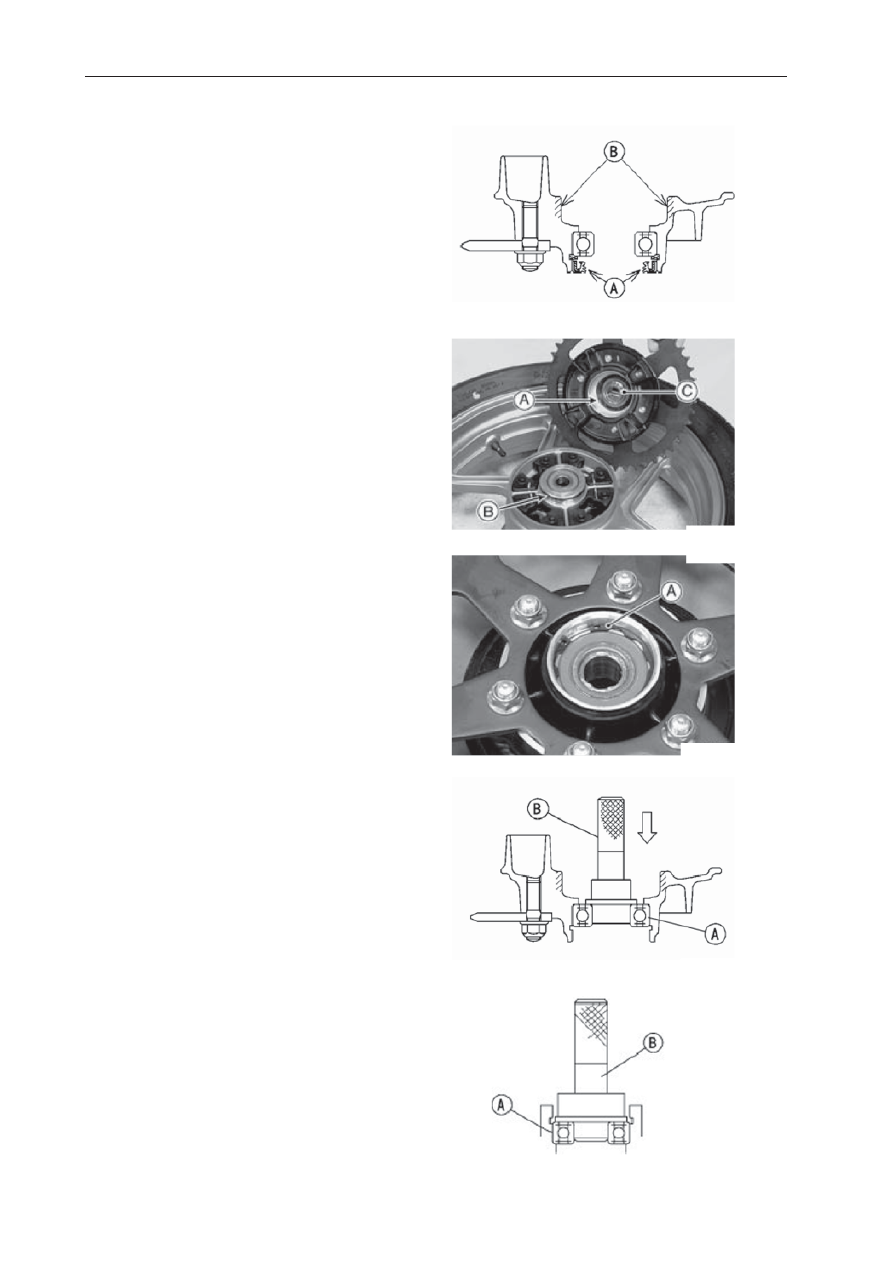CFMoto motorcycle CF650NK. Service Manual - part 28

11-12 FINAL DRIVE
Coupling Installation
●
Apply high-temperature grease to the coupling
grease seal lips [A].
●
Apply grease to the coupling internal surface [B].
●
Grease the following.
Wheel Flange Portion [A]
O-ring [B]
●
Install the collar [C].
Coupling Bearing Removal
●
Remove:
Coupling
Grease Seal
Circlip [A]
Special Tool - Inside Circlip Pliers
●
Remove the bearing [A] by tapping from the
wheel side.
Special Tool - Bearing Driver Set [B]
Coupling Bearing Installation
●
Replace the bearing with a new one.
●
Press in the bearing [A] until it is bottomed.
Special Tool - Bearing Driver Set [B]
●
Replace the circlip with a new one.
Special Tool - Inside Circlip Pliers